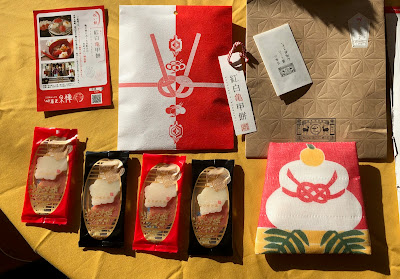ブログ再開 / Blog Started Again
ブログを約2年、更新を止めてしまいました。
以前も、更新を止めては、再開ということを繰り返していました。
ですが、今回の未更新は最も長く、大きな理由もなく、単に私のやる気の問題でした。
2025年に入り、重い腰を上げ、ようやく再開です。
下記のセクションを本日、アップしました。
⑨ 2022年10月17日 関西旅行 - d) 出雲大神宮 - 境内散策 ; 京都 /
ブログの機能として、一度公開すると、その日が、'公開日' として記録に残ります。
なので、実際は、本日:2025年1月25日公開であるにもかかわらず、記録としては
'2023年4月27日木曜日' になっています。
いつか、更新日が、'今日' に追いつけることを目指して、少しづつではありますが、更新してゆきたいと思います。
 |
| ジョウビタキ (メス) 尾の長い鳥が、12月頃から庭にやってきていましたが、 どの鳥かがわかっていませんでした。 つい最近、リビング前の鉢にとまり、近くで撮影することができ、 ジョウビタキ(尉鶲、常鶲)であることがわかりました。 今日も、やってきたので撮影しました。 日本では、ジョウビタキは、冬の渡り鳥です。 Daurian Redstart (Female) A long-tailed bird has been coming to the garden since around December, but I didn't know what kind of bird it was. Just recently, it landed on a pot in front of the living room, and I was able to take a close-up photo, which revealed it to be It came by again today, so I took a photo of it. In Japan, Daurian Redstarts are winter migratory birds. |
Blog Started Again
I stopped updating my blog for about two years.
I had stopped updating and started again many times before.
But this was the longest period while I had stopped updating, and there was no big reason for it, it was just a matter of my motivation.
Now in 2025, I finally managed to get myself to start again.
The following section was uploaded today.
⑨ 2022年10月17日 関西旅行 - d) 出雲大神宮 - 境内散策 ; 京都 /
As a blog function, once we publish something, that date will be recorded as the 'uploaded date'.
So, even though it was actually uploaded today: 25th of January, 2025, it is recorded as '2023年4月27日木曜日' : 'Thursday, 27th of April, 2023' in Japanese.
I would like to update the blog little by little, with the aim that one day the update date will catch up today's date.




























.jpeg)































